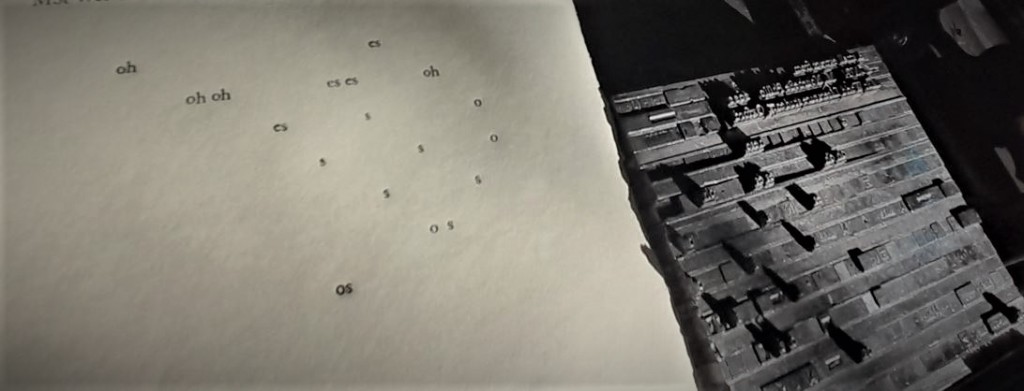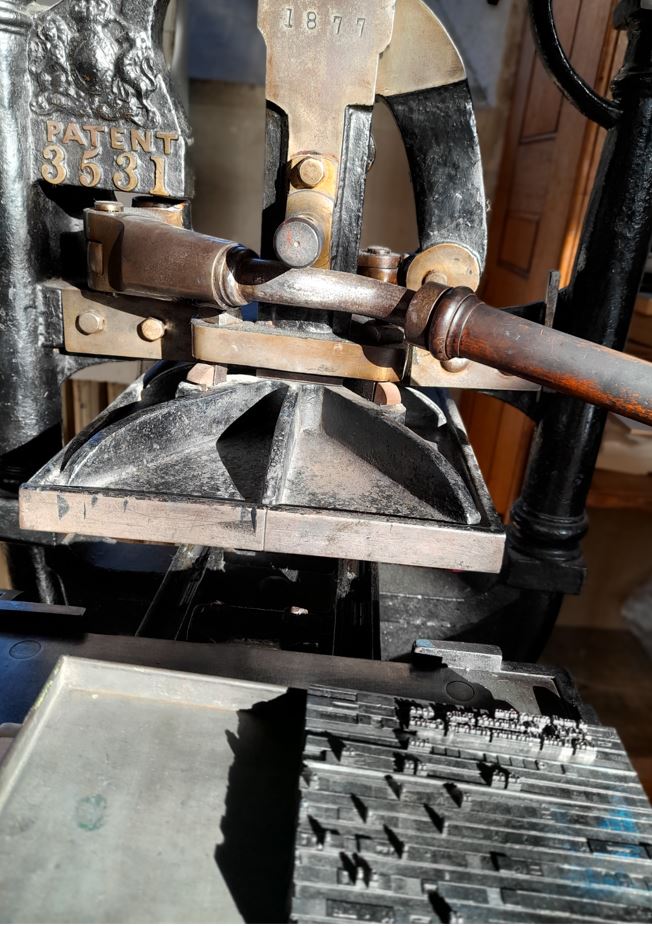



What is space on the page? In M. NourbeSe Philip‘s poem Zong! the space around words appears as an element in its own right. The poem is based on the case of drowning of enslaved Africans from a ship on a voyage across the Atlantic in 1781. On the printed page, the words seem to float or fall across the surface of the paper, fragmenting and sometimes re-forming. The Notanda to Zong! explain the governing principle of the placement of words and phrases on the page: that a space must exist above each word or word cluster. After contacting the author, with her kind permission in 2022 University of Oxford Masters’ students in World Literature recreated a small selection from one page in letterpress, focussing on how the space between the fragments is created ready for an impression, as a tangible element provided by the metal spacing material. The class was taught in the Bodleian’s letterpress workshop. The exercise connects with the Writers Make Worlds resource showcasing contemporary Black and Asian literature in English.
The line that I printed contained just two letters; the rest was blank space. Placing the ‘quads’ (metal spacing) alongside the type made me realise not only that blank space has to be created on the page, but that these spaces are crucial to ensuring that the letters themselves are positioned correctly on the page, with just the right amount of space between them.’ (Chloe Lam)
Attending the print workshop was a fun and enlightening experience. Although I knew a bit about book printing beforehand, seeing how it worked in real life really drove home the amount of skill and (often invisible) labour that has gone into printing for hundreds of years.’ (Mary Bowen-Perkins)
My MSt dissertation focuses on M. NourbeSe Phillip’s Zong! alongside two other works of contemporary experimental poetry. As such, I’ve spent months (and will spend several more months!) carefully considering the sonic dimensions of NourbeSe’s work when read aloud—the intricate structures and breakdowns of rhyme, rhythm, and syntax that Zong! encompasses. Attempting to recreate a section of Zong! with a printing press, however, demanded that I instead focus on the visual arrangement of words, letters, and blank spaces on the page. I had to consider the spatial relations between words both within and across lines—an exercise that made my appreciation for the intricacies of Zong! (and, admittedly, the modern conveniences of word processors and digital printing) skyrocket.’ (Margaret Schnabel)
Hand-setting in metal type is a method of printing that was current in 1781, not two centuries later; it is probably not the way Zong! was first printed in 2008 when Philip’s poem was published by Wesleyan University Press and by The Mercury Press in Toronto, but it provided an exercise for both hand and mind in recognizing the feature of space.
